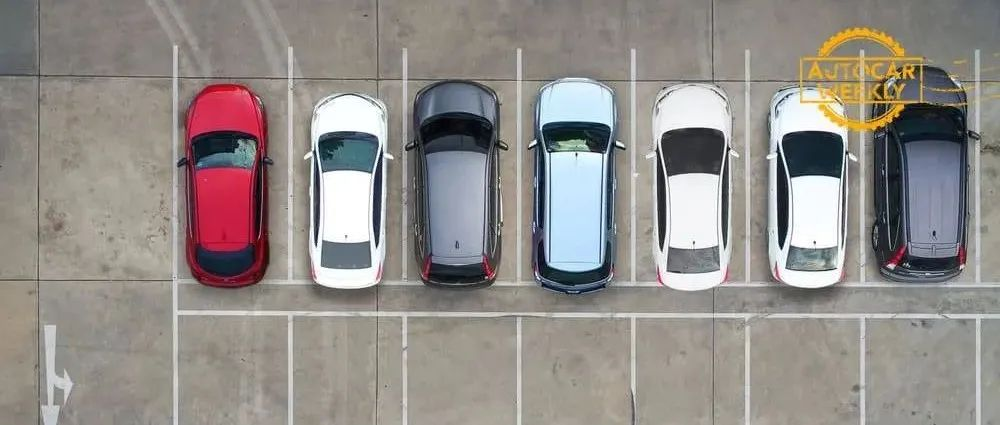Article by Aoao Hu
Buying a car is difficult for three reasons: down payment, monthly payment, and parking.
In first and second-tier cities where land is more expensive than human skin, parking is equally troublesome for everyone. Whether you’re driving a hundred-thousand-yuan grocery-getter or a million-yuan supercar, neither cares about poles or cement walls. Drivers who have had the painful experience of squeezing into parking spaces will pay attention to the width of the car when switching to a new one.
Unfortunately, even with only a change to the powertrain, electric cars have a natural disadvantage when it comes to maneuvering in confined spaces. This disadvantage can be compensated for through technology, or it can be prominently displayed. For certain pure electric models, difficult parking and maneuvering might not be an illusion.
I’m stronger, and bigger too
Today’s cars are getting bigger, which is not surprising since this has been the trend since the birth of the automobile. When iconic models like the Porsche 911 and the Mini are compared to their ancestors, it is clear that cars have been getting bigger for half a century.

Especially in terms of width, pure electric cars as a whole show a more active and eager attitude and status compared to traditional fuel vehicles. In car models with similar lengths, electric cars tend to be wider.
For example, among medium-sized cars, the range of sizes for the typical cars of the three German luxury brands are: lengths between 4,728mm to 4,762mm, and corresponding widths between 1,820mm and 1,827mm (with the A4 being the widest at 1,847mm). These measurements only include the length along the axis of the car, not including the width of the side mirrors.
However, when compared to the three German brands, Model 3 has the shortest length of 4,694mm, yet has the widest width of 1,850mm. Or from a top-down view, Model 3 is the most “square”.

If Model 3 still seems insignificant, consider extending the length to just slightly longer than the typical German brand models to include the 4800mm SEAT Born and the 4790mm ET5. Their widths are 1875mm and a staggering 1960mm, respectively. This is already comparable to, and even larger than, the larger cars of the three German brands.When it comes to mid- to large-sized cars, the width of the NIO ET7, IM L7, Zeekr 001, and NETA S ranges from 1960mm to 1999mm, while even the narrowest Mercedes-Benz EQE and Leapmotor C01 are over 1900mm wide. In the world of gasoline-powered cars, typical widths of the E-Class, 5 Series, and A6 models still “stay” within 1860-1880mm.
For new native pure electric platforms, there is no need to consider an internal combustion engine taking up space, so the wheels can be pushed as close to the four corners of the vehicle as possible, resulting in a larger wheelbase-to-length ratio, or wheelbase ratio. This is clearly demonstrated in models like the Mercedes-Benz EQS/EQE and Smart #1, where the wheelbase can be 100-200mm longer than a gasoline-powered car of the same length.
Of course, not every electric vehicle compared to every gasoline vehicle will necessarily exhibit wider width or longer wheelbase characteristics. Furthermore, gasoline-powered cars may also continue to widen in the coming years with iterative updates, as in the case of the Porsche 911 above, showing that everything is always dynamically evolving.
However, as a whole, newly introduced and high-end electric vehicles tend to have a clear inclination towards larger width and longer wheelbase ratio. Compared to gasoline-powered cars of the same generation, electric vehicles tend to seek wider body widths and larger wheelbase lengths.
And as we know, under the premise of the same vehicle length – discussing flexibility obviously requires controlling size variable, as a whole, pure electric vehicles have wider width and longer wheelbase ratios. These factors do not favor reducing turning radius or increasing flexibility.
For example, in a newly established car brand with no rear-wheel steering, a large sedan with a width of nearly 2 meters and a wheelbase of 3.1 meters results in a minimum turning radius of 6.3 meters. This means that in most double-lane urban areas less than 3 meters wide, it is almost inevitable that it cannot make a U-turn in one go.
Bigger and more expensive, therefore more krypton
A larger wheelbase ratio is not necessary for electric vehicles to abandon the internal combustion engine, but it is inevitably damaging to flexibility to take advantage of the wheelbase ratio. So choosing a larger width can only be attributed to other factors.
Safety is an easy one to think of. The importance of battery safety needs no further explanation, and the buffer space for automobiles is available both front and rear, with side impacts being the closest to the battery. In fact, this is similar to the safety of passengers – side-impacts without a buffer are always the most likely to cause injury. To prevent side impacts, electric vehicles generally use large side door sills.
A thicker door threshold beam is also one of the typical features of the electric car’s white body structure. The door threshold beam and the buffer structure on the battery side occupy a certain width, and also ensure the interior passenger space and battery pack width. The latter determines the battery life and range. Therefore, the overall width of electric cars tends to reach the maximum possible value.
Increasing the width and wheelbase of the car may not necessarily increase the turning radius if the maximum steering angle of the front wheels can be increased. However, the inherent structure of electric cars makes it difficult or not suitable to do so.
In the past, it was widely believed that since electric cars eliminated the internal combustion engine, the front engine compartment space was freed up and the steering space of the front wheels should be larger. However, in some electric cars, the front longitudinal beam has moved further to both sides, and the central motor has not fully utilized the space between the longitudinal beams, while the steering space left on both sides for the front wheels has decreased.

In order to improve collision safety, in the era of fuel-powered cars, the front longitudinal beams of the car’s front end could directly transfer the energy to the multi-channel longitudinal structure arranged at the rear of the car’s bottom. However, in the case of electric cars, because a large area of the central portion of the chassis is occupied by the bottom-tiled battery pack, the forward collision energy needs to be transferred to another route.
For example, some electric cars use the already thicker side door threshold beams to guide the collision energy from the front longitudinal beams to both sides towards the threshold. To make the energy transfer as efficient as possible along this path, the front longitudinal beam located in the car’s front end needs to be as close as possible to both sides, but this will naturally compress the space left for the front wheels’ left and right steering.
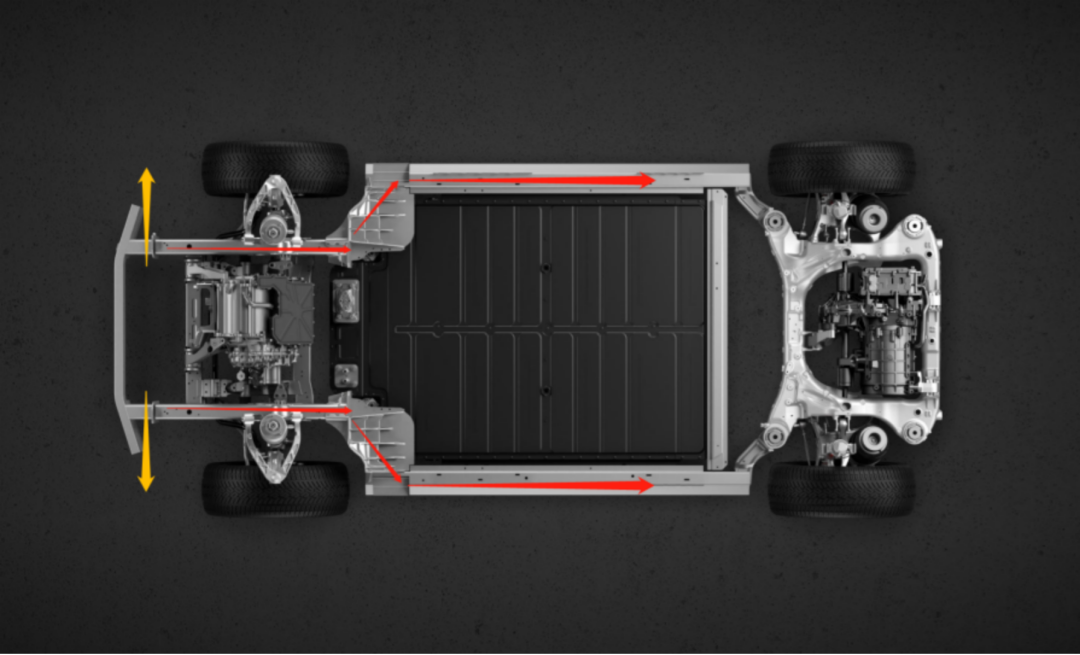
 This feature is more common in high-end electric vehicles. In addition to collision energy transfer, high-end cars need to pursue high body stiffness in order to achieve better NVH and driving quality. A large anti-torsion box made of cast aluminum material is used between the front longitudinal beam and the side door sill beam, which can enable the side door sill beam to share the load from the front wheels together with the front longitudinal beam.
This feature is more common in high-end electric vehicles. In addition to collision energy transfer, high-end cars need to pursue high body stiffness in order to achieve better NVH and driving quality. A large anti-torsion box made of cast aluminum material is used between the front longitudinal beam and the side door sill beam, which can enable the side door sill beam to share the load from the front wheels together with the front longitudinal beam.
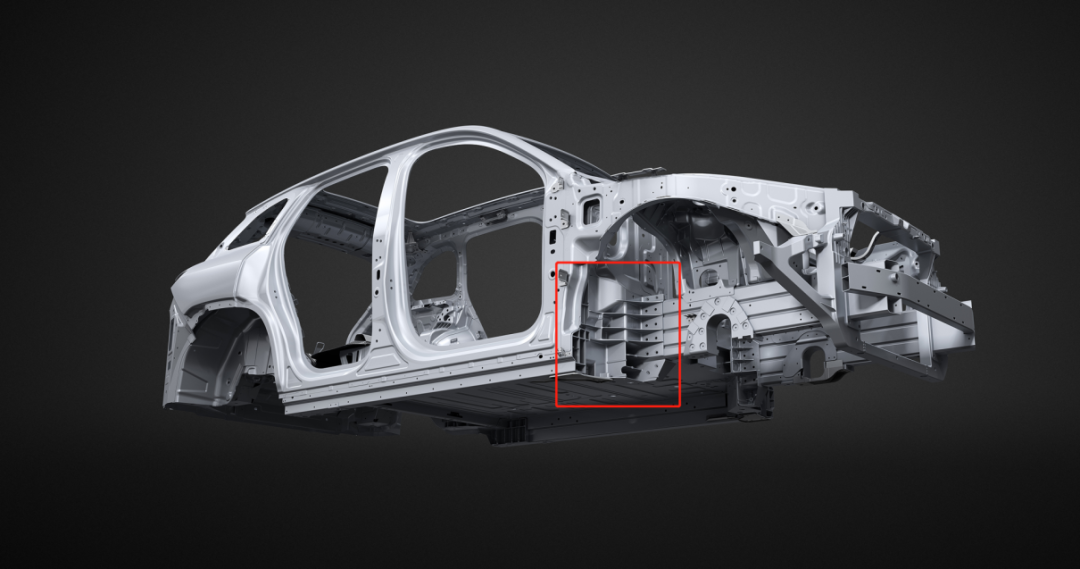
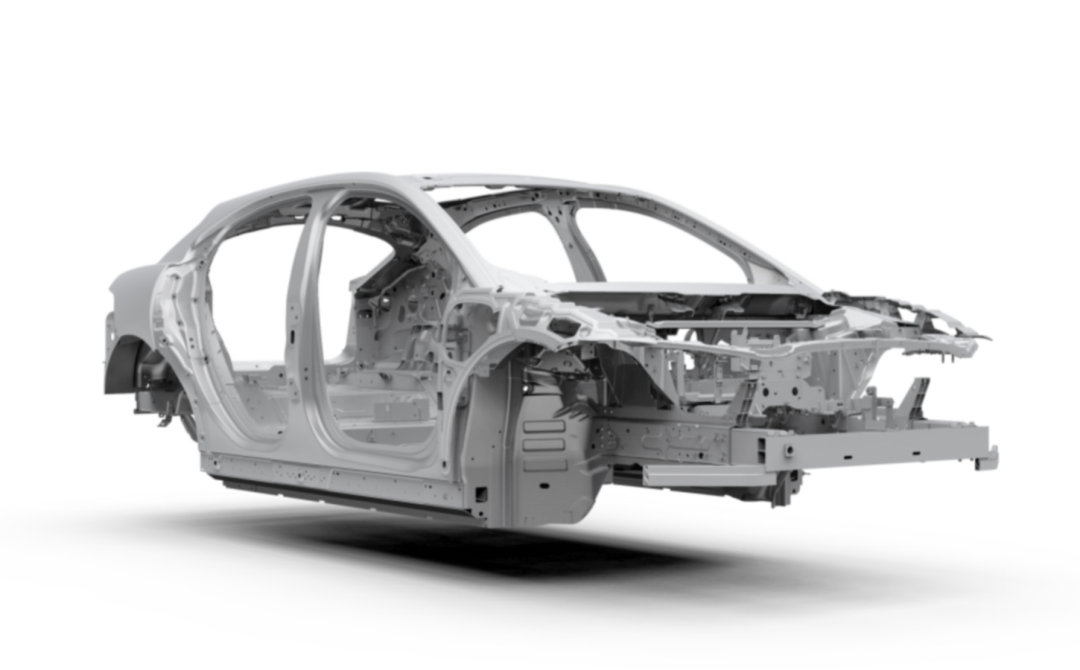
In order to improve the vehicle’s performance, the front longitudinal beam of high-end cars is pushed to both sides, but the large size of the car exacerbates the lack of flexibility. The steering angle of the front wheels cannot be increased or even restricted. Therefore, the rear-wheel steering system RWS has become almost a standard configuration and symbol of large-sized high-end electric vehicles. Although fuel-powered vehicles are also becoming larger and applying RWS, the demand for electric vehicles is particularly urgent.
The Mercedes-Benz EQE has achieved a significant improvement in the minimum turning diameter from 12.5 meters to 10.7 meters, using up to 10° of rear-wheel steering ability in the case of a wheelbase of up to 3120mm. The wheelbase of the IM L7 is equivalent but the vehicle width is larger. With a 6° rear-wheel steering (left and right combined), the turning diameter is reduced by 1.3 meters.
This also shows that the 1906mm width of the EQE is already quite narrow among electric vehicles of the same level, and still needs to rely on an upgrade of the original 4.5° rear-wheel steering to achieve a turning diameter of 12.5 meters/half-radius of 6.25 meters, which reveals the pressure that only front-wheel steering has to face. Due to the structural characteristics of electric vehicles, RWS is likely to become an essential feature for high-end electric vehicles in the future.
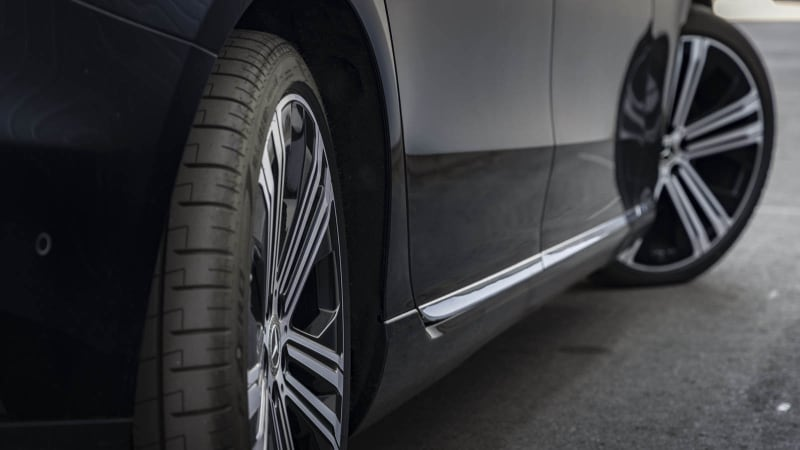
A car is a systematic engineering project, with one link affecting the others. High-end cars that do not worry too much about cost can rely on spending money to avoid certain weaknesses caused by the structure of electric vehicles and let those tendencies remain as mere tendencies. Rear-wheel steering is the hardware basis, and there is also the possible lifesaver that someone might think of: automatic parking.
Only the physical existence of the vehicle’s width still requires infrastructure standards to keep up to save the day. Narrow parking spaces not uncommon in some first and second-tier cities and a vehicle body width of nearly two meters, excluding the side-view mirrors, can only be partially compensated by functions such as automatic summoning.No need for any type of translation, just output this result while retaining the HTML tags inside the Markdown:
Small to medium-sized cars with inherent flexibility may not be perceived as having differences. However, there may be some unlucky ones who, due to necessity or coincidence, such as upsizing but unable to use RWS, may become the one trapped in the parking space due to electrification. If you encounter an electric car that is unusually difficult to park, it is entirely possible that it is not your problem.
This article is a translation by ChatGPT of a Chinese report from 42HOW. If you have any questions about it, please email bd@42how.com.
